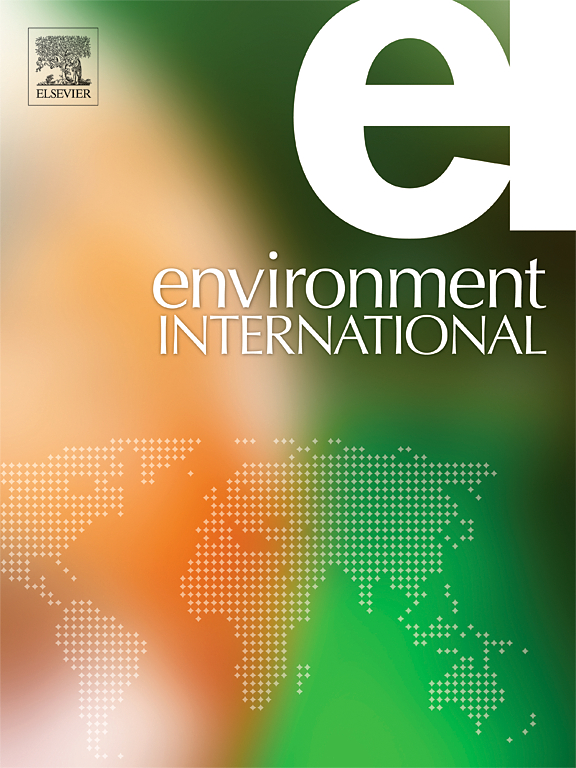In vivo and In vitro assessment of the retinal toxicity of polystyrene nanoplastics
IF 10.3
1区 环境科学与生态学
Q1 ENVIRONMENTAL SCIENCES
引用次数: 0
Abstract
Plastic pollution has emerged as a critical global environmental challenge, yet the effects of the ingested plastic particles on ocular health remain largely unexplored. In this study, we investigated the impact of orally ingested polystyrene nanoplastics (PS-NPs) on the mouse retina. The in vivo experimental results showed that PS-NPs could penetrate the mouse retina within 2 h after gavage. Their levels increased at 4 h and remained detectable up to 24 h post-gavage. Prolonged exposure (28 days) to PS-NPs might disrupt the tight junctions of the inner blood-retinal barrier (iBRB). Moreover, PS-NPs induced oxidative stress in the retina by downregulating the expression of Nrf2 and HO-1, and potentially promoted apoptosis via the upregulation of Cleaved caspase 3. Additionally, we used human retinal microvascular endothelial cells (HRMECs) to model the iBRB and employed a human retinal pigment epithelial cell line (ARPE-19) to assess the potential toxicity of PS-NPs on the human retina. Our results indicated that PS-NPs penetrated and disrupted the simulated iBRB, inducing oxidative stress and promoting apoptosis in ARPE-19 cells. This study provides critical insights into the potential risks of ingested PS-NPs to retinal health and offers novel perspectives on the broader implications of plastic pollution for humans.


求助全文
约1分钟内获得全文
求助全文
来源期刊

Environment International
环境科学-环境科学
CiteScore
21.90
自引率
3.40%
发文量
734
审稿时长
2.8 months
期刊介绍:
Environmental Health publishes manuscripts focusing on critical aspects of environmental and occupational medicine, including studies in toxicology and epidemiology, to illuminate the human health implications of exposure to environmental hazards. The journal adopts an open-access model and practices open peer review.
It caters to scientists and practitioners across all environmental science domains, directly or indirectly impacting human health and well-being. With a commitment to enhancing the prevention of environmentally-related health risks, Environmental Health serves as a public health journal for the community and scientists engaged in matters of public health significance concerning the environment.
 求助内容:
求助内容: 应助结果提醒方式:
应助结果提醒方式:


